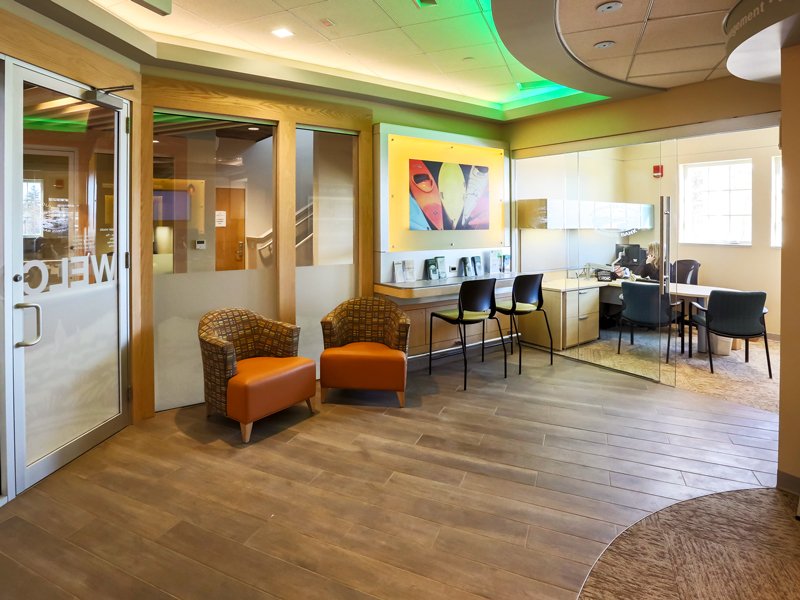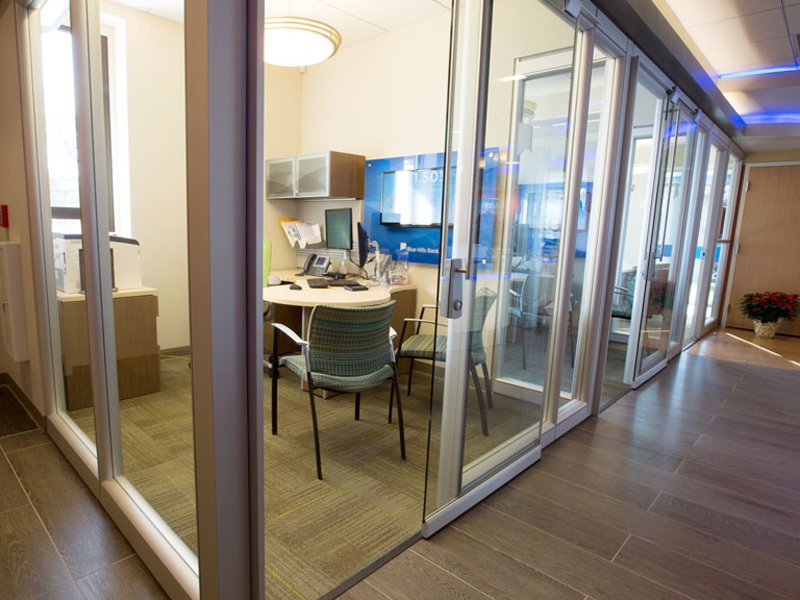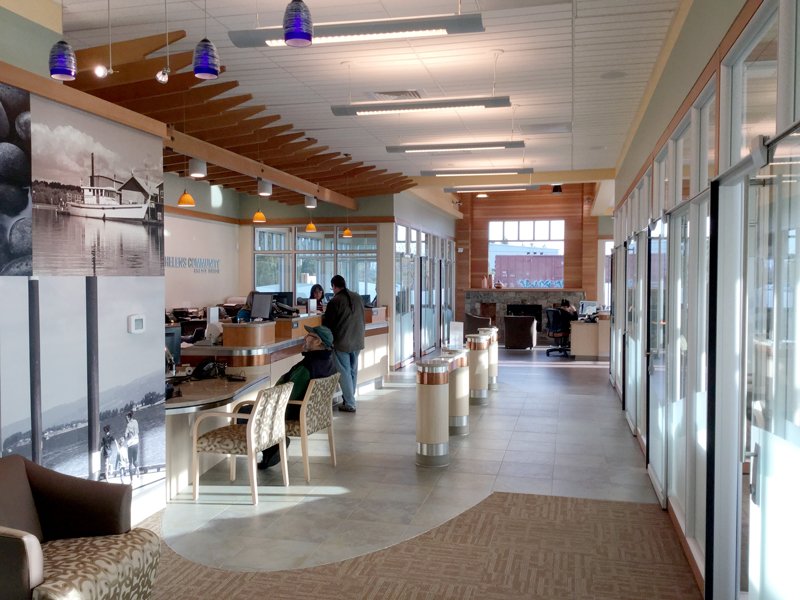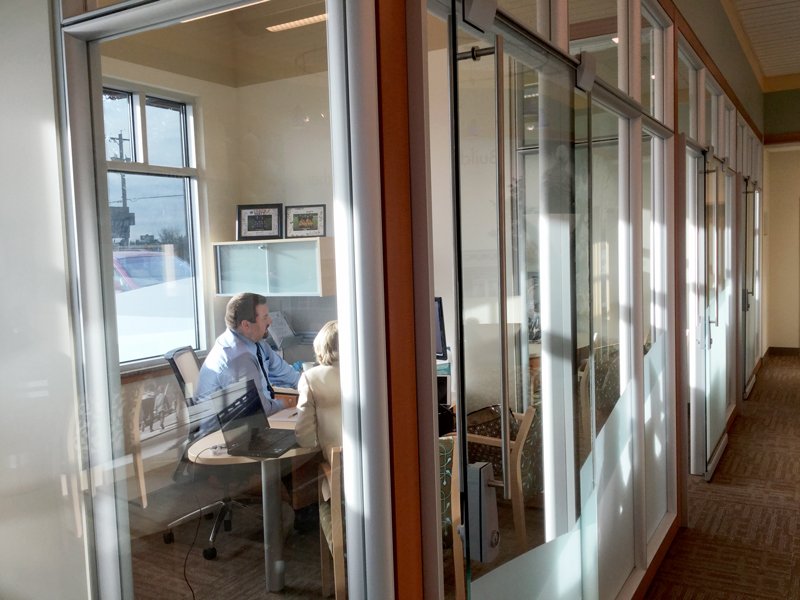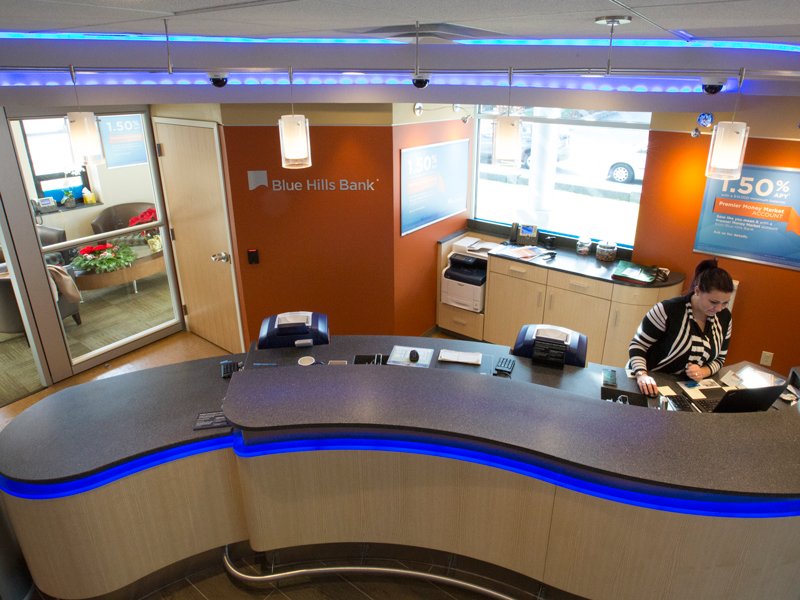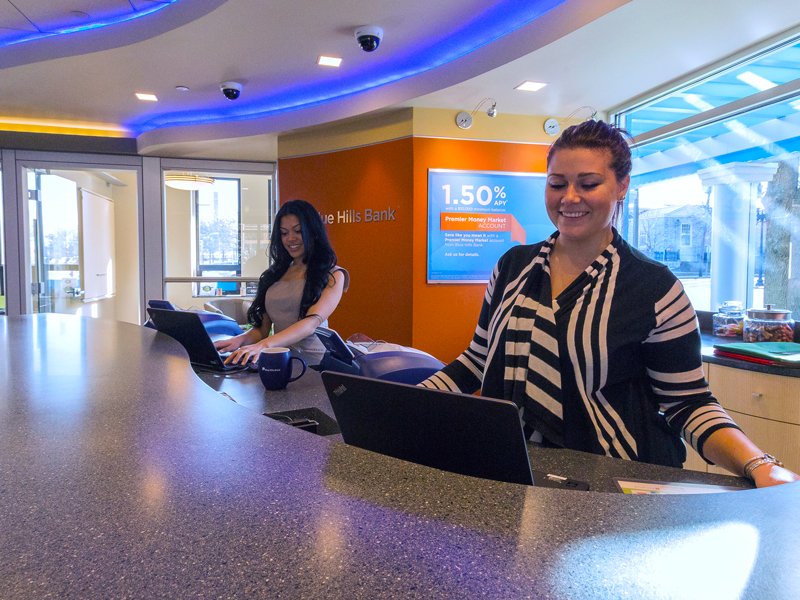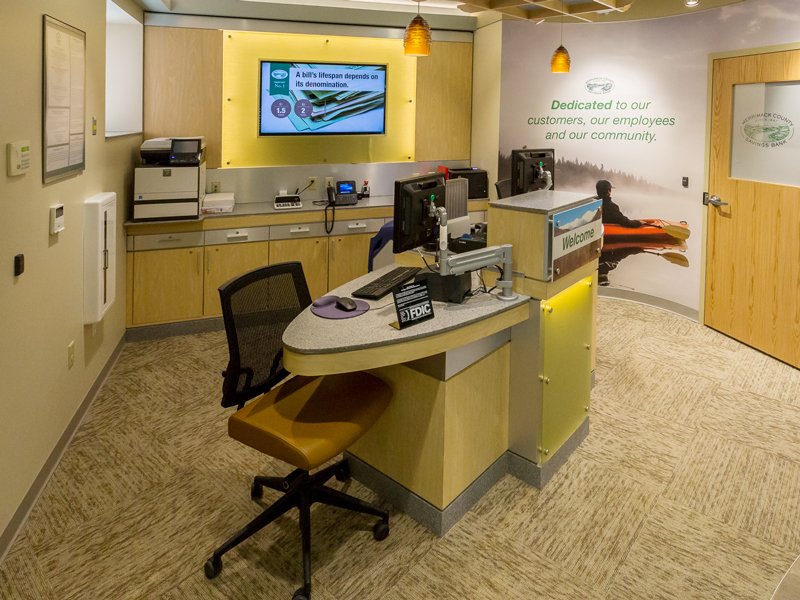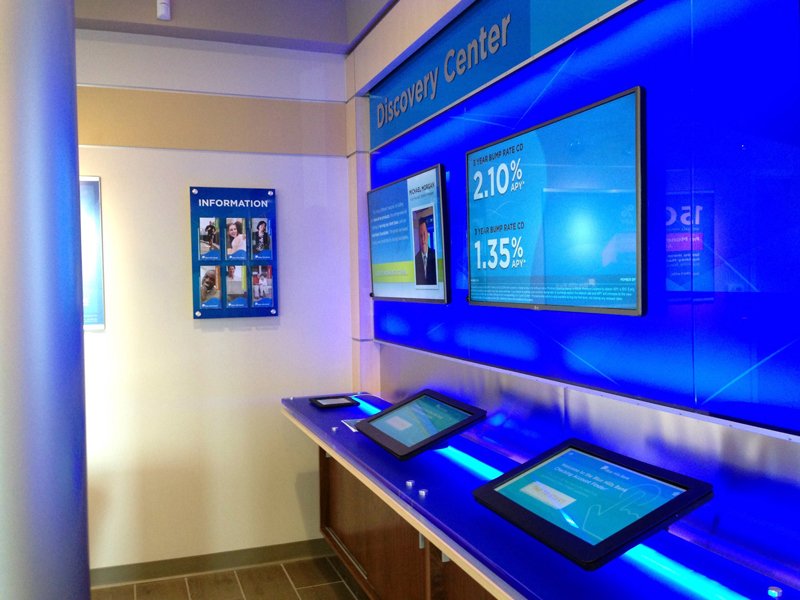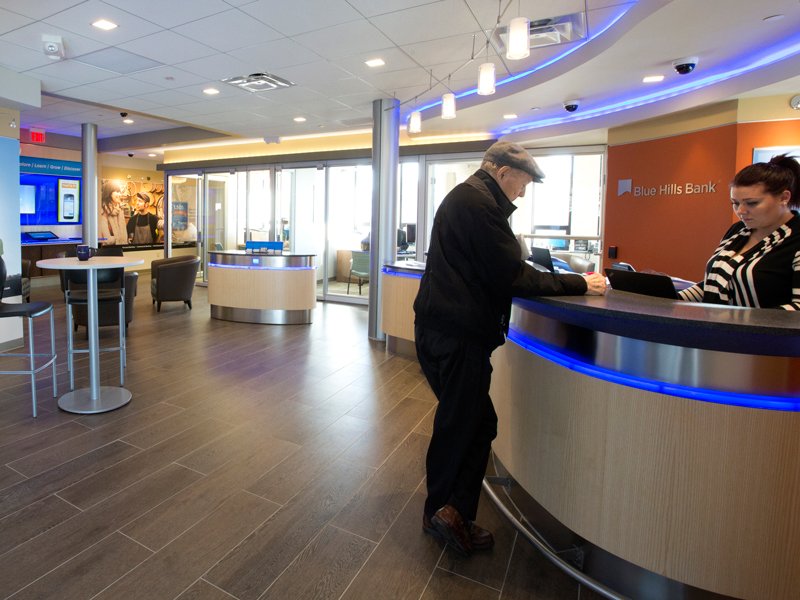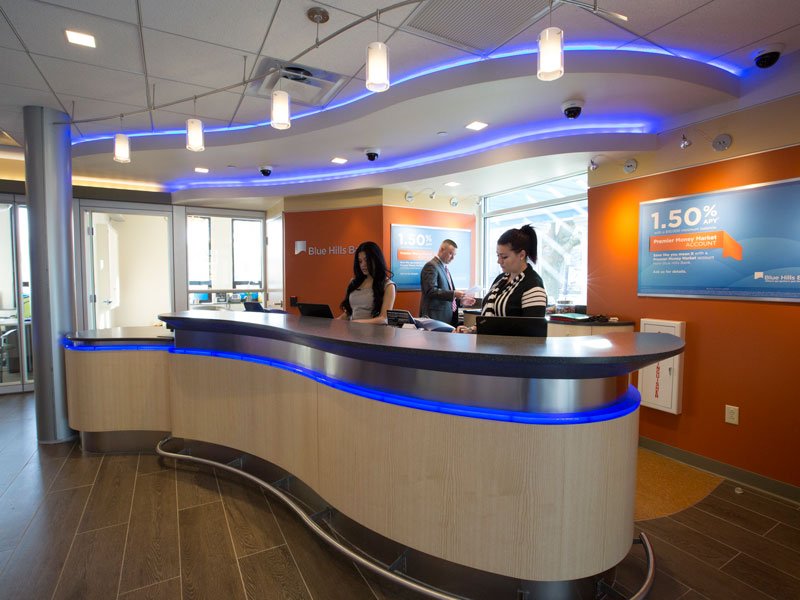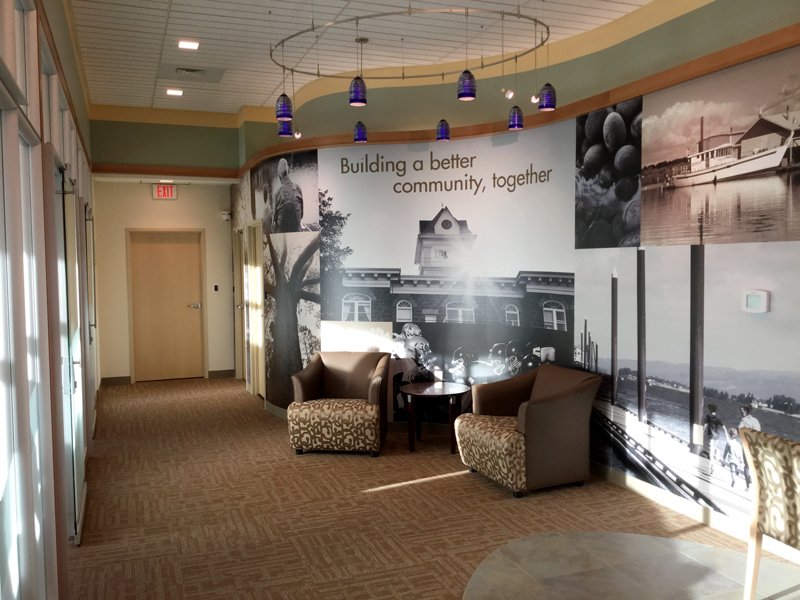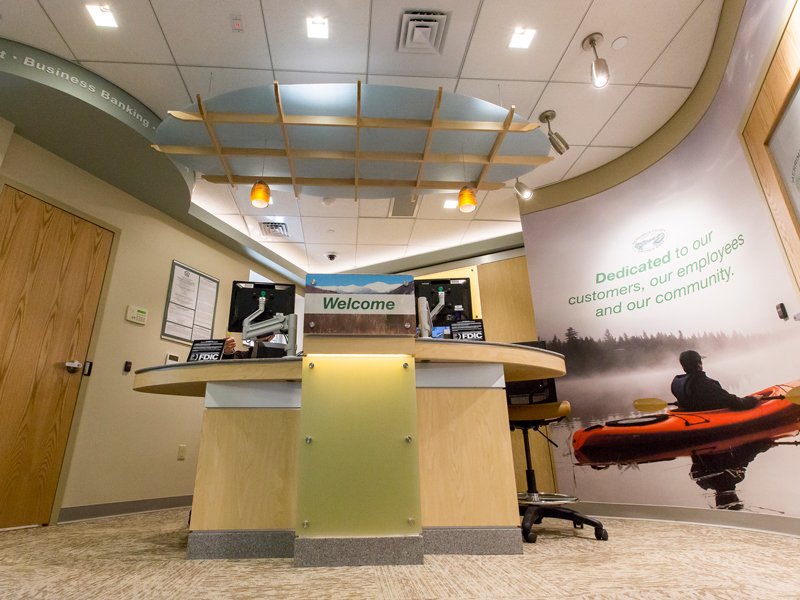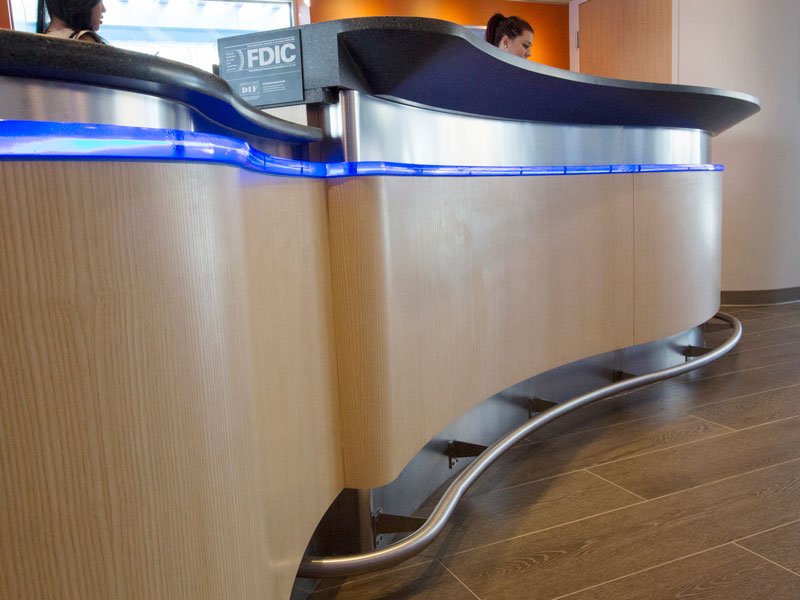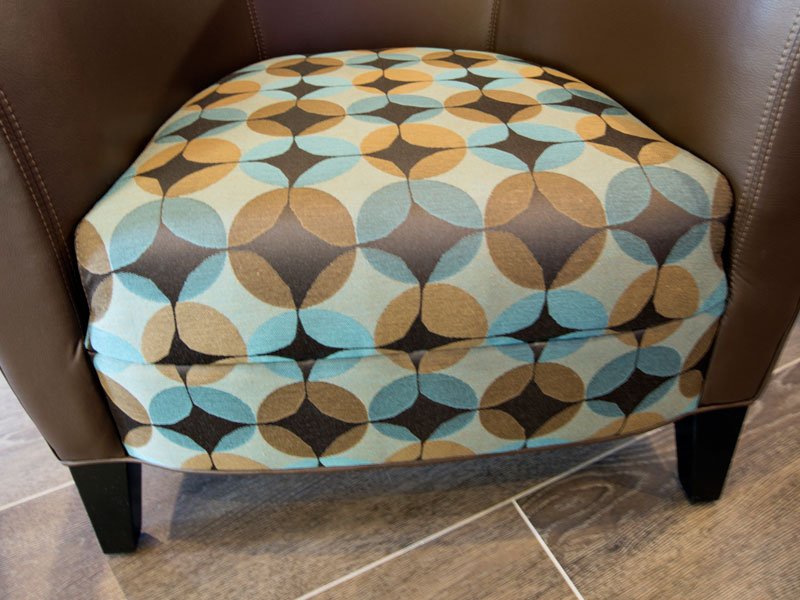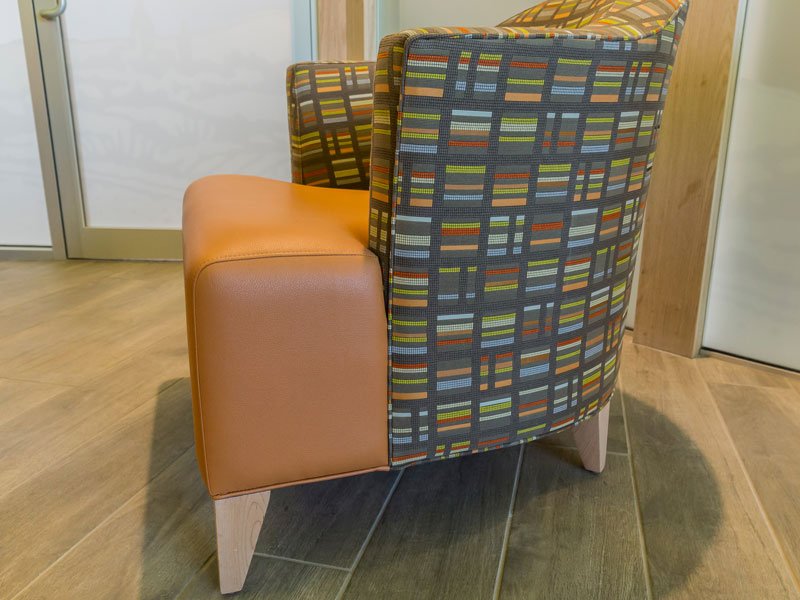While community banks and credit unions continue to grow, the physical size of branches are getting smaller and smaller. With the rise of online and mobile banking, along with the introduction of new technologies like smart ATMs and video tellers, today’s banks are able to offer more of their services in smaller spaces. While this is great for many reasons, including significantly reduced overhead and operational costs, designing for a smaller footprint introduces its own set of challenges. Our team of experienced designers know that when it comes to small branches, every bit matters. Here are some of their pro-tips:
1) LET THE LIGHT IN.
Merrimack County Savings Bank // 900 Sq. Ft.
Read more about this project here.
Blue Hills Bank // 1,500 Sq. Ft.
Learn more about this project here.
St. Helens Community Credit Union // 2,900 Sq. Ft.
St. Helens Community Credit Union // 2,900 Sq. Ft.
We immediately perceive well-lit spaces as being larger and more inviting. Let more light into your space by utilizing different materials, such as office walls made of glass. This can improve the amount of natural light let into your branch and give it an airy, open atmosphere without compromising privacy. Still have problem areas? Try illuminating dark spaces with decorative light fixtures or LEDs. This not only brightens your space, but also helps to build your brand experience.
2) ELIMINATE CLUTTER.
Blue Hills Bank // 1,500 Sq. Ft.
Learn more about this project here.
Blue Hills Bank // 1,500 Sq. Ft.
Learn more about this project here.
Merrimack County Savings Bank // 900 Sq. Ft.
Read more about this project here.
Cluttered workspaces immediately feel more cramped and claustrophobic. Resolve this issue by ensuring every area of your branch has usage-appropriate storage. Choose office furniture that is built to accommodate necessary file storage. Identify tech-heavy areas of the branch and install outlets and power-strips nearby to avoid running wires and cords through your space. Make sure millwork is built to the specifications of the equipment your staff uses every day, such as computer monitors, printers and cash-dispensers.
3) TAKE YOUR MESSAGING DIGITAL.
Blue Hills Bank // 1,500 Sq. Ft.
Learn more about this project here.
We all know that digital signage can be a great investment for many reasons, but did you know how much it can help maximize your retail space? Larger banking spaces have traditionally had ample room to hang posters, display artwork, and promote community events. However, a smaller branch can mean significantly reduced wall space. Enter digital signage. In addition to providing engaging and dynamic content, digital signage allows for limitless messaging opportunity without taking up too much real estate.
4) PAINT AN ACCENT WALL.
Blue Hills Bank // 1,500 Sq. Ft.
Learn more about this project here.
A bold wall color can help create a focal point and also gives the illusion of receding in space, making the room feel larger. This is an easy way to support your brand, while making your space more contemporary. Incorporating large-scale environmental graphics or textured wallpaper are other ways you can achieve a similar effect, and add texture to your space.
5) USE ORGANIC SHAPES.
Blue Hills Bank // 1,500 Sq. Ft.
Learn more about this project here.
St. Helens Community Credit Union // 2,900 Sq. Ft.
Merrimack County Savings Bank // 900 Sq. Ft.
Read more about this project here.
Straight lines and sharp angles can appear to close off space and create a more rigid atmosphere. Instead, try using more natural, organic shapes. Think about introducing oval fixtures and curving lines to your space. Flowing forms can help open up small spaces, making them more inviting while increasing visual space.
6) THINK ABOUT MATERIALS.
Blue Hills Bank // 1,500 Sq. Ft.
Learn more about this project here.
Blue Hills Bank // 1,500 Sq. Ft.
Learn more about this project here.
Merrimack County Savings Bank // 900 Sq. Ft.
Read more about this project here.
The materials used in fixtures and furniture have always been of key importance when determining the look and feel of any interior space; in smaller spaces material selection is more important than ever. While the possibilities are virtually endless, we have a few tips when it comes to designing for smaller spaces:
1) Use Light Shades.
Darker materials carry more visual weight and can therefore have a heavier feel. Try to pick lighter shades that reflect more light, giving the illusion of having more space.
2) Introduce Some Contrast.
While lighter materials tend to work best in small spaces, it’s important that there is also some contrast. Using too many similar shades can visually flatten a space, and runs the risk of feeling sterile and weightier. Try creating depth by using a darker trim or introducing a contrasting material like metallic accents.
3) Play With Pattern.
Adding pattern is another great way to create contrast within your space. Try incorporating patterned fabrics on furniture, or consider tiling your flooring to create interesting geometry.
Is your bank or credit union looking to build a new branch or acquire a new space? The Element Group specializes in small- and micro-branch design, including the recent completion of a full-service branch within a 150 square foot space. Ask us how we can help with your next project today!
————————————————————————–
Article written by Anna Taylor for The Element Group.
